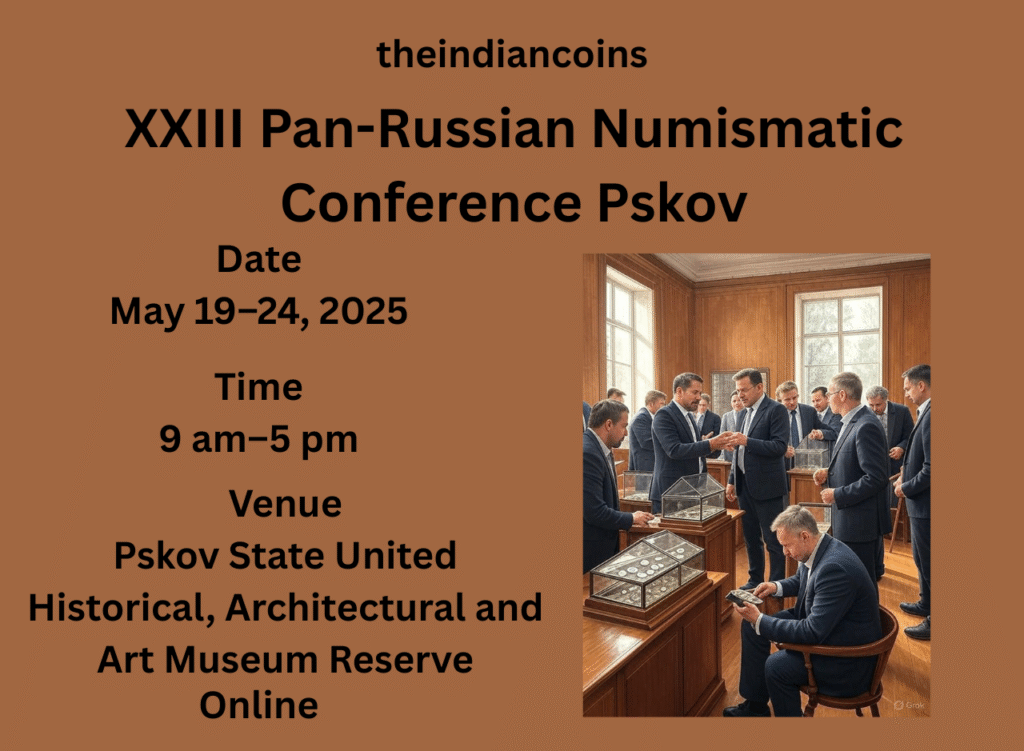
Join the XXIII Pan-Russian Numismatic Conference Pskov online from May 19–24, 2025 (9 am–5 pm) at the Pskov State United Historical, Architectural and Art Museum Reserve. Explore keynote lectures, virtual museum tours, workshops on coin grading, and a special medal unveiling in honor of Pskov’s 600-year coinage legacy.
Conference Overview and Historical Significance
The XXIII Pan-Russian Numismatic Conference Pskov marks the twenty-third installment of Russia’s premier numismatic forum, uniting scholars and enthusiasts to explore coinage’s role in Russian history. First convened in the Soviet era, this conference series has evolved into a vital platform for presenting the latest research on monetary history, archaeological finds, and modern numismatic trends. The 2025 edition is particularly significant as it commemorates 600 years since Pskov struck its first coins, reflecting the city’s medieval prominence as a trading hub between Russia and Northern Europe
During six intensive days, participants will engage in daily sessions from 9 am to 5 pm, seamlessly streamed online to accommodate both local and international attendees . Through a blend of scholarly presentations, digital exhibitions, and interactive workshops, the conference underscores the ongoing importance of coins as tangible links to Russia’s past and catalysts for cross-cultural exchange.
Host Institution: Pskov State United Museum Reserve
Situated at Nekrasov Street, 7, Pskov, the Federal State Budgetary Institution of Culture “Pskov State United Historical, Architectural and Art Museum Reserve” provides the conference’s official home base . Founded to preserve Pskov’s rich architectural and artistic legacy, the museum reserve boasts extensive collections of medieval coins, numismatic archives, and archaeological artifacts. In recent years, it has spearheaded virtual outreach initiatives, digitizing its holdings to make regional treasures accessible globally.
Under the leadership of Director Natalia V. Smirnova, the museum reserve has collaborated with national institutions to launch thematic exhibitions on medieval minting techniques and trade networks that shaped early Russian statehood. Its state-of-the-art digitization lab will host live-streamed tours and behind-the-scenes demonstrations of coin conservation during the conference.
Organizing Partners and Collaborations
The conference is a joint venture of several leading Russian cultural and academic bodies:
State Historical Museum (Moscow):
Renowned for its comprehensive national collections, it contributes archival resources and senior curators for keynote presentations.The State Historical Museum, located on Red Square in Moscow, is one of Russia’s most prominent cultural institutions. Founded in 1872, it houses an extensive collection of artifacts that span Russian history from prehistoric times to the early 20th century. Its numismatic department is especially renowned, containing over 1.5 million items, including ancient coins, medals, banknotes, and minting equipment.
The museum plays a key role in national and international numismatic research. It regularly collaborates with scholars, organizes exhibitions, and publishes academic journals. As a co-organizer of the XXIII Pan-Russian Numismatic Conference Pskov, it contributes expert speakers, archival materials, and curatorial insights that enhance the event’s scholarly value.
With its iconic red-brick façade and neo-Russian architecture, the museum is not only a historical treasure trove but also a symbol of Russia’s commitment to preserving its cultural heritage.
The State Hermitage Museum (St. Petersburg):
Co-organizer of the “Imperial Coinage” session, lending expertise on Romanov-era numismatics.The State Hermitage Museum in St. Petersburg is one of the largest and oldest museums in the world, founded in 1764 by Empress Catherine the Great. Housed in the historic Winter Palace and several adjoining buildings, it features over 3 million items spanning art, culture, and history from across the globe.
Its numismatic collection is among the most significant in Europe, containing ancient Greek and Roman coins, Russian imperial currency, medals, and decorations. The Hermitage’s Department of Numismatics is deeply involved in scholarly research, conservation, and international exhibitions.
As a partner of the XXIII Pan-Russian Numismatic Conference Pskov, the Hermitage contributes high-level academic expertise, particularly in the area of imperial and pre-revolutionary Russian coinage, reinforcing the event’s academic depth and prestige.
International Numismatic Club:
Provides global outreach and online platform management, ensuring seamless webinar delivery.The International Numismatic Club (INC) is a private cultural and educational organization based in Moscow, dedicated to the promotion and study of numismatics—the collection and scholarly research of coins, medals, and currency. Founded with the support of major collectors and philanthropists, the INC serves as a hub for both experts and enthusiasts.
The club maintains a museum-quality collection of rare coins and numismatic literature, and regularly hosts exhibitions, lectures, and conferences. It is known for fostering collaboration between private collectors, academic researchers, and public institutions.
As a co-organizer of the XXIII Pan-Russian Numismatic Conference Pskov, the International Numismatic Club brings in international perspectives, manages digital platforms for online participation, and promotes global engagement within the numismatic community.
Institute of Archaeology of the Russian Academy of Sciences:
Partners on archaeological numismatics panels, presenting recent excavation findings from Pskov region sites. The Institute of Archaeology of the Russian Academy of Sciences (IA RAS) is Russia’s leading scientific institution for archaeological research. Based in Moscow, it was established in 1933 and operates under the umbrella of the Russian Academy of Sciences.
The institute conducts excavations, preserves archaeological artifacts, and publishes scholarly works across all periods of human history in Russia—from the Paleolithic era to the late medieval period. It has a dedicated department for archaeological numismatics, focusing on the study of ancient and medieval coins found at excavation sites.
As a key partner of the XXIII Pan-Russian Numismatic Conference Pskov, the Institute provides critical academic input, including presentations of recent coin hoard discoveries, field research from the Pskov region, and expert analysis that bridges archaeology and monetary history.
This consortium underscores the interdisciplinary nature of modern numismatics, blending historical study with cutting-edge technology for cataloguing and analysis.
Thematic Focus: 600-Year Anniversary of Pskov Coinage
A central theme celebrates 600 years since the first documented coinage in Pskov – a milestone highlighting the city’s role in medieval trade routes connecting Novgorod, Livonia, and Western Europe. Sessions will trace Pskov’s minting evolution:
Origins of Pskov Coinage:
Analysis of 15th-century silver dengas and novodel reproductions.The origins of Pskov coinage date back to the early 15th century, marking a significant moment in the city’s economic and political development. As a major trading hub in northwestern Russia, Pskov began minting its own silver coins, known as dengas, to support growing commerce and assert its autonomy from the Novgorod Republic.
These early coins typically featured Christian symbols, local rulers’ names or initials, and simple designs influenced by both Novgorodian and Western European styles. The establishment of a local mint reflected Pskov’s rise as a powerful city-state with strong mercantile ties to the Baltic region.
Pskov’s coinage played a key role in regional trade, and its early issues are now valuable numismatic evidence of the city’s medieval sovereignty and cultural identity.
Design Motifs and Inscriptions:
Symbolism in Pskov coins reflecting political authority and religious iconography.The design motifs and inscriptions on early Pskov coins reflect the city’s religious, political, and cultural identity during the medieval period. Most coins featured Christian symbols such as crosses or saints, emphasizing the city’s Orthodox faith and spiritual legitimacy.
Inscriptions were usually brief, often including the name or initials of local rulers, mint officials, or the city itself. These inscriptions, written in Old Russian or Church Slavonic, served as a mark of authenticity and authority.
The style of these coins was simple but distinct, influenced by the coinage of Novgorod and European trade partners, yet tailored to local tastes and governance. Together, the motifs and inscriptions help historians trace Pskov’s development as a semi-independent republic with its own monetary system.
Economic Impact:
The circulation of Pskov coins in Baltic trade networks, evidenced by hoards found in Scandinavia and the Baltics.The economic impact of Pskov’s coinage was significant in strengthening the city’s role as a major trade and commercial center in medieval Russia. By minting its own silver dengas, Pskov facilitated smoother local and regional transactions, reducing reliance on foreign or Novgorodian currency.
These coins enhanced merchant confidence, promoted market stability, and supported trade with neighboring regions, including the Baltic states, Livonia, and Novgorod. Their circulation across Northern Europe, as found in hoards and archaeological sites, highlights Pskov’s active participation in international trade networks.
Overall, local coinage helped Pskov assert economic independence, boost tax revenues, and solidify its status as a prosperous and influential medieval city-state.
These presentations draw on recent research and metal-detectorist discoveries, offering fresh insights into Pskov’s monetary economy.
Keynote Lectures and Featured Speakers
Renowned numismatists and historians headlining the conference include:
- Dr. Alexei V. Petrov (State Historical Museum): “Pskov in the 15th Century: Minting Silver Dengas”
- Prof. Elena I. Kuznetsova (Institute of Archaeology RAS): “Archaeological Coin Finds in the Pskov Region: 2010–2024”
- Dr. Michael L. Brown (International Numismatic Club): “Digital Cataloguing and Blockchain in Modern Numismatics”
- Dr. Tatiana S. Volkova (Hermitage): “Imperial Pskov Medallions: Artistry and Propaganda”
Each lecture runs 60 minutes, followed by a 30-minute moderated Q&A.
Virtual Museum Tours and Digital Exhibitions
Participants will enjoy live virtual tours of the museum reserve’s numismatic vaults, guided by Chief Curator Irina N. Sorokina . High-resolution 3D models of rare coins (e.g., Pskov dengas, Solovetsky novodels) will be showcased, with interactive annotations on minting techniques. A special “Behind the Scenes” exhibition explores:
The coin conservation laboratory
The coin conservation laboratory is a specialized facility dedicated to the preservation, cleaning, and restoration of coins and other numismatic artifacts. Located within museums or research institutions, it uses advanced techniques to stabilize and protect coins from corrosion, wear, and environmental damage.
At the Pskov State United Historical Museum, the laboratory is equipped with tools like ultrasonic cleaners, microscopes, and chemical baths, allowing experts to carefully remove dirt, assess metal composition, and apply reversible conservation materials.
This lab plays a vital role in preparing coins for exhibitions, digital imaging, and academic study, ensuring their long-term survival while maintaining historical authenticity.
The imaging suite for macro-photography
The imaging suite for macro-photography is a dedicated space where high-resolution images of coins and small artifacts are captured with extreme detail. Using specialized macro lenses, lighting setups, and digital cameras, this suite allows photographers to document fine features such as mint marks, inscriptions, surface textures, and signs of wear or forgery.
At the Pskov State United Historical Museum, this imaging suite supports both research and digital archiving, enabling the creation of 3D models, virtual exhibits, and publication-quality visuals. It is an essential tool for scholars, collectors, and curators to analyze and share numismatic objects with accuracy and clarity.
The digital asset management system
The digital asset management system (DAMS) is a specialized software platform used to store, organize, and retrieve digital files—such as high-resolution images, metadata, and research documents—related to numismatic collections.
At the Pskov State United Historical Museum, the DAMS helps curators and researchers catalog coins, track conservation history, manage exhibition materials, and share content with the public or academic community. It ensures that all digital assets are securely archived, easily searchable, and accessible for use in virtual exhibitions, publications, and educational programs.
This system plays a key role in preserving the museum’s digital heritage and supporting collaborative research.
These digital experiences aim to democratize access and inspire remote collaboration.
Workshops: Grading, Conservation, and Authentication
Hands-on online workshops will equip attendees with practical skills:
- Coin Grading Masterclass: Led by certified graders, covering wear assessment, provenance research, and market grading standards.
- Conservation Techniques: Demonstrations of ultrasonic cleaning, oxidation control, and reversible conservation materials.
- Authentication Methods: Use of X-ray fluorescence (XRF) spectrometry and die-link analysis for verifying metallic composition and suspected forgeries.
Participants can submit high-resolution coin images in advance for live critique.
Roundtables and Panel Discussions on Digital Cataloguing
Exploring the future of numismatic databases, panels will debate:
- Data Standards and Interoperability: How to harmonize metadata schemas across institutions.
- Blockchain and Provenance Tracking: Potential and pitfalls of decentralized registries for rare coins.
- Crowdsourced Cataloguing: Engaging amateur collectors in validating die varieties via online platforms.
Case studies include the Russian State Coin Archive’s recent pilot project with the Hermitage.
Special Events: Commemorative Medal Unveiling
A highlight is the unveiling of the XXIII Conference commemorative medal, designed by sculptor Viktor A. Mikhailov. Struck in .925 Sterling silver, the medal features:
- Obverse: Pskov Kremlin skyline with the dual-headed eagle from the 15th-century dengas.
- Reverse: Inscription “600 лет чеканки монет в Пскове” (“600 years of coinage in Pskov”) encircled by laurel wreaths.
A limited edition of 300 pieces will be auctioned online, with proceeds funding the museum’s digitization efforts.
Networking Lounges and Online Exhibitor Stands
Using a virtual-conference platform, the event offers:
- Thematic Lounges: “Medieval Coinage,” “Imperial Medals,” “Modern Investing,” each moderated by experts.
- Exhibitor Booths: National mints (e.g., Goznak), coin dealers, grading services, and technology vendors showcasing software for cataloguing and trading.
- One-on-One Meetings: Bookable 15-minute slots with speakers and curators for in-depth discussions.
These features foster connections across the numismatic community.
Participation Details and Registration
Registration is free but required via the conference website. Packages include:
- Full Access Pass: All live sessions, recordings, and virtual tours.
- Workshop Add-On: Includes graded certificate of completion.
- Exhibitor Pass: Virtual booth with analytics on visitor engagement.
Late registration closes May 17, 2025, at midnight Moscow time.
Technical Platform and Online Access
The conference leverages a secure, scalable webinar platform offering:
- Live Streaming: Multi-bitrate video for bandwidth adaptation.
- Interactive Q&A and Polling: Real-time audience engagement tools.
- On-Demand Archive: Recordings available for six months post-conference.
A dedicated helpdesk will provide 24/7 technical support throughout the event.
Sponsorship Opportunities and Supporters
Sponsors can gain visibility through:
- Conference Branding: Logo placement on opening slides, emails, and website.
- Sponsored Sessions: Exclusive lecture slots or panel moderation.
- Virtual Booths: Customized exhibitor lounges with video demos.
Supporting organizations include the Russian Numismatic Society, World Coin News, and leading academic presses.
Press Coverage and Media Accreditation
Media representatives may apply for press accreditation, granting:
- Interview Access: Pre-conference briefings with keynote speakers.
- Exclusive Content: Early access to digital exhibitions and medal imagery.
A press kit with logos, schedules, and speaker bios is available on request.
Post-Conference Publications and Proceedings
Following the event, the State Historical Museum Press will publish:
- Proceedings Volume: Peer-reviewed articles from keynote and workshop papers.
- Digital Catalogue: Open-access PDF of featured coin images and metadata.
- Special Journal Issue: The International Numismatic Journal dedicates an issue to conference highlights.
Selected papers may be translated into English, French, and German.
Conclusion
The XXIII Pan-Russian Numismatic Conference Pskov offers an unprecedented opportunity to explore six centuries of Pskov coinage, engage with leading scholars, and experience cutting-edge digital numismatics—all from the convenience of your home. Whether you’re a seasoned collector, museum professional, or nascent researcher, this conference promises rich insights, practical skills, and lasting connections within the global numismatic community.
Frequently Asked Questions
What are the exact dates and times of the conference?
The conference runs May 19–24, 2025, with daily sessions from 9 am to 5 pm Moscow time .
How can I register, and is there a fee?
Registration is free. Visit the official conference page to sign up before May 17, 2025.
Will sessions be recorded?
Yes, all lectures and workshops will be available on demand for six months after the event.
How do I submit coins for the grading workshop?
Registered participants may upload high-resolution images (minimum 300 dpi) via the workshop portal.
Can I attend only specific sessions?
Yes, partial registration is available for individual tracks and workshops for a nominal fee.
Who should I contact for media accreditation?
Email the press office at [email protected] with “Media Accreditation” in the subject line.
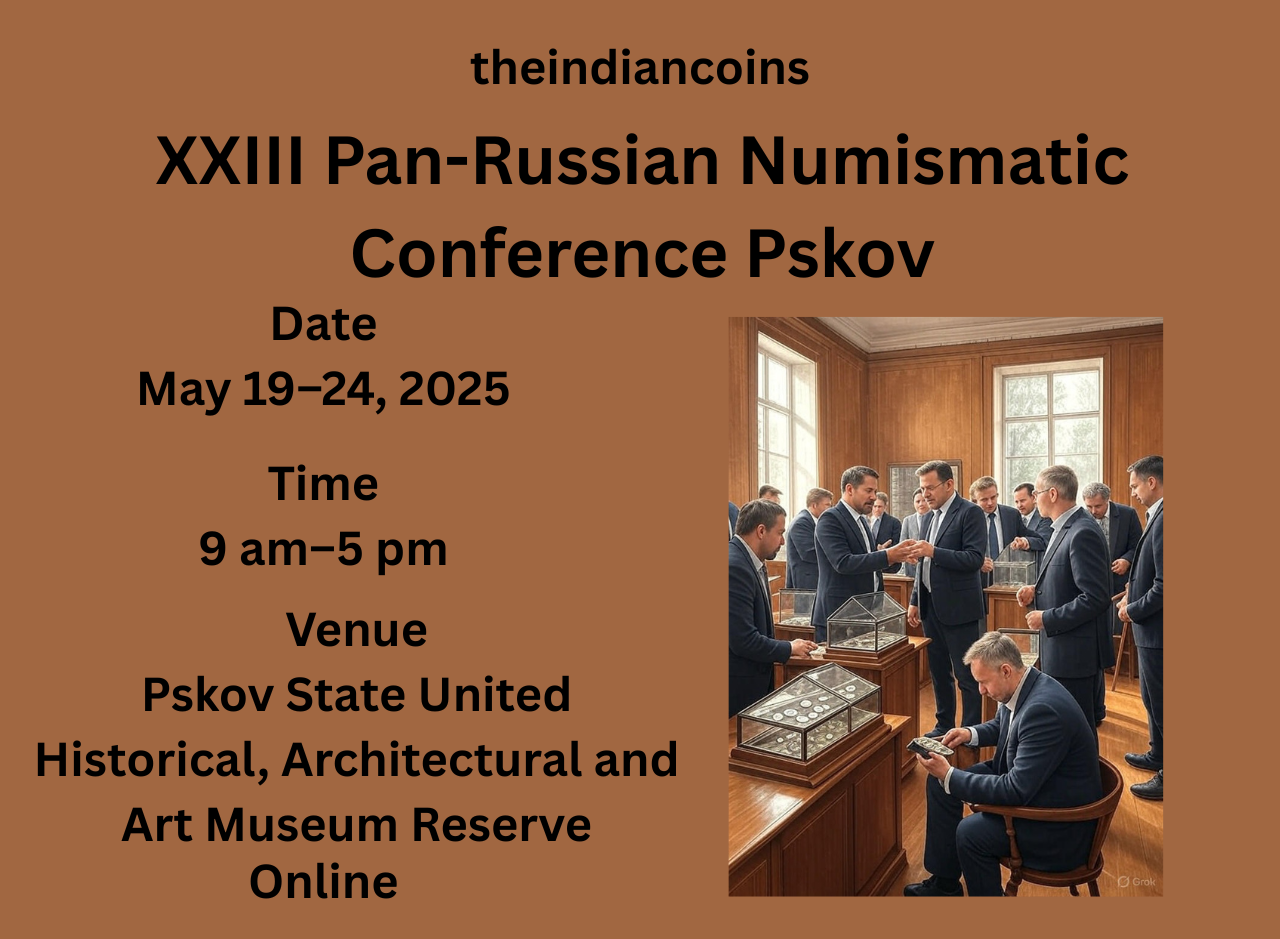
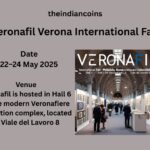
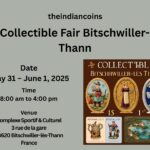

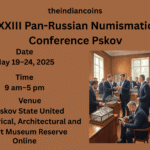
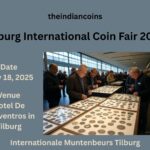
1 thought on “XXIII Pan-Russian Numismatic Conference Pskov”